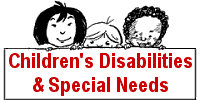 |

| |
|
| ||
Causes and Prevelance of Cerebral PalsyCauses of Cerebral PalsySince cerebral palsy refers to a group of disorders, there is no exact known cause. Some major causes are asphyxia, hypoxia of the brain, birth trauma or premature birth, genetic susceptibility, certain infections in the mother during and before birth, central nervous system infections, trauma, and consecutive hematomas. After birth, the condition may be caused by toxins, physical brain injury, incidents involving hypoxia to the brain (such as drowning), and encephalitis or meningitis. However the cause of most individual cases of cerebral palsy is unknown. Recent research has demonstrated that intrapartum asphyxia is not the most important cause as it was once considered to be, though it still plays a role, probably accounting for no more than 10 percent of all cases. The research has shown that infections in the mother, even infections that are not easily detected, may triple the risk of the child developing the disorder, mainly as the result of the toxicity to the fetal brain of cytokines that are produced as part of the inflammatory response. Premature babies have a higher risk because their organs are not yet fully developed. This increases the risk of asphyxia and other injury to the brain, which in turn increases the incidence of cerebral palsy. Periventricular leukomalacia is an important cause of cerebral palsy. Also, some structural brain anomalies such as lissencephaly cause symptoms
of CP, although whether that could be considered CP is a matter of opinion
(some people say CP must be due to brain damage, whereas these people
never had a normal brain). Often this goes along with rare chromosome
disorders. Incidence and Prevalence of Cerebral PalsyPrevalence is best calculated around the school entry age of about six years. In the industrialized world, the incidence is about 2 per 1000 live births[1]. In the United States, the rate is thought to vary from between 1.5 to 4 per 1000 live births. This amounts to approximately 5,000-10,000 babies born with cerebral palsy each year in the United States. Each year, around 1,500 preschoolers are diagnosed with the disorder in the USA. There is mental retardation in 60% of the cases, due to brain damage outside the parietal, occipital, temporal or Basal Ganglia. Mental retardation can occur if the child is not given the opportunities to learn; it does not solely occur from brain damage, but from an individual(s)'s ability to 1) communicate with the child and 2) be able to have the child effectively communicate through speech or other means. For example, a child that had CP who suffers from blindness/deafness due to damage that occurred in the occipital and temporal lobes during birth could use tactile sign-language or tulonoma to communicate. Tulonoma is a type of technique where the user puts his/her hands on the speakers mouth and is able to interpret what they say solely based on the lip movement patterns associated with particular word(s). Other disorders paired with CP include disorders of hearing, eyesight, epilepsy, perception of obstacles (such as judging how far away things are when driving a car), speech difficulties, and eating and drinking difficulties. These esimates include individuals who did not have access to an equal opportunity education prior to the American with Disabilities Act of 1990. Overall, advances in care of pregnant mothers and their babies has not resulted in a noticeable decrease in cerebral palsy. Only the introduction of quality medical care to locations with less than adequate medical care has shown any decreases. The incidence increases with premature or very low-weight babies regardless of the quality of care. Most recently, Apgar scores have been indicated to not be a reliable method of determining whether or not an individual has CP; it really depends on how quickly oxygen reaches the brain and the body's vital organs that matter, instead. Despite medical advances, the incidence and severity of cerebral palsy has actually increased over time. This may be attributed to medical advances in areas related to premature babies (which results in a greater survival rate). Wikipedia Article. |
|
|
Cerebral Palsy Articles |
Comeunity : Parenting | Adoption | Special Needs
Comeunity www.comeunity.com Parenting Support for Your Unique Family